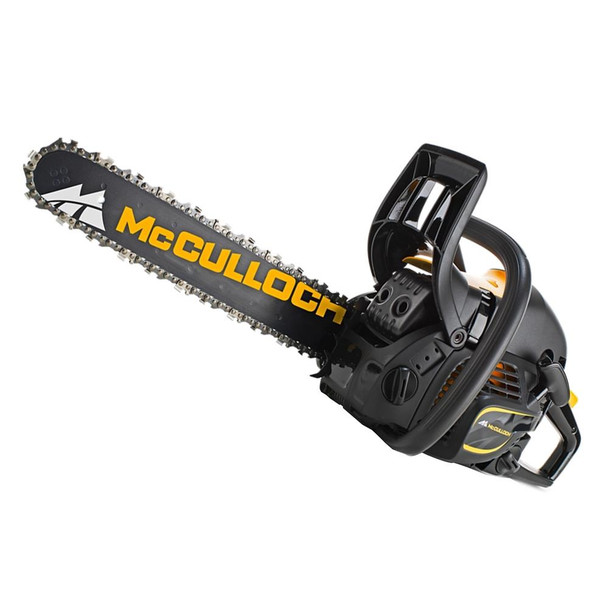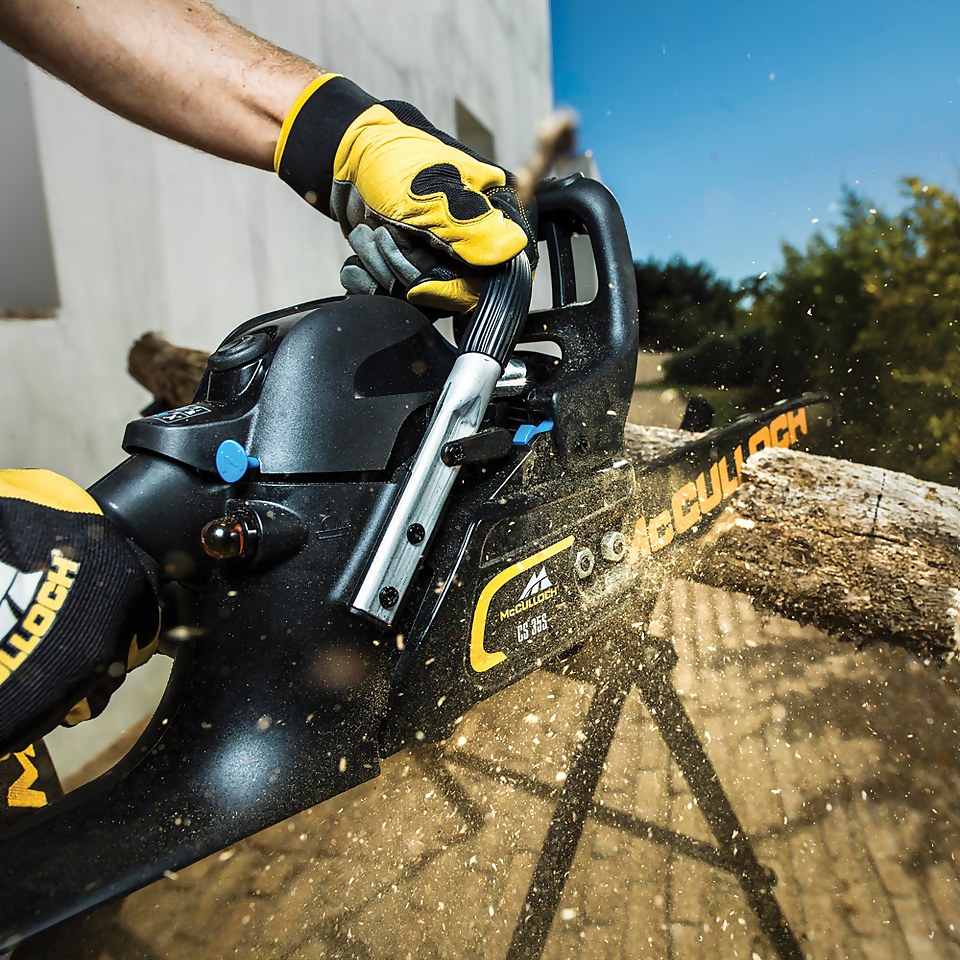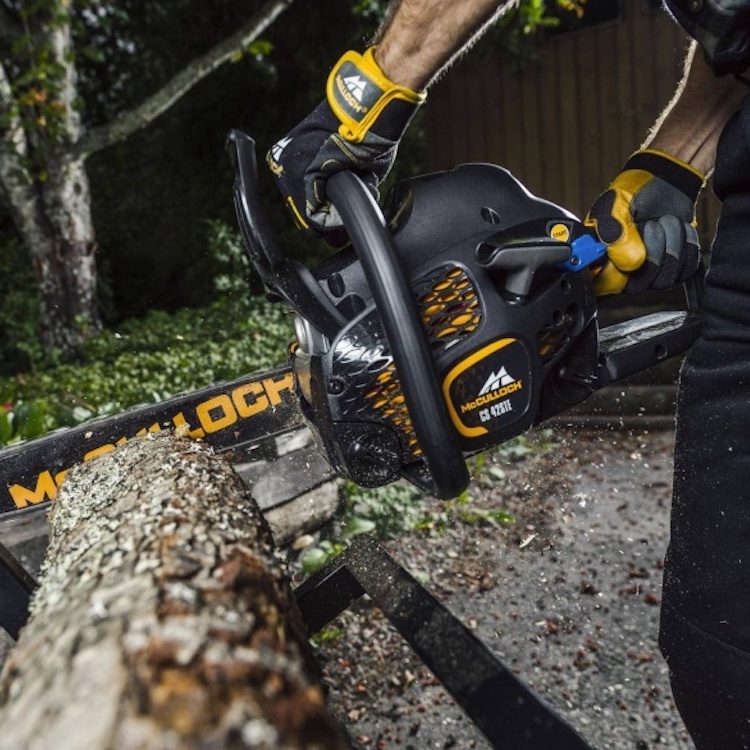Introduction to Mcculloch Chainsaws
Mcculloch chainsaws have carved a niche in the market with their durability and efficiency. Known for reliable performance, they cater both to homeowners with backyard duties and professionals facing rugged demands. But even the sturdiest tool needs timely maintenance. Proper care extends the life of these powerful machines and ensures peak performance during every use. Whether pruning limbs or cutting down trees, a well-maintained chainsaw is crucial. In this section, we will explore the foundations of Mcculloch chainsaws and the key steps to maintain them. This will set the stage for more detailed maintenance tips, ensuring your chainsaw runs smoothly for years to come.
Essential Maintenance Tools for Your Chainsaw
To keep your Mcculloch chainsaws in top condition, you need the right tools. A few essentials include a sturdy workbench or surface, a chainsaw sharpening kit, a cleaning brush or blower, and an air filter maintenance kit. Ensure you have a set of screwdrivers and round files that match the chainsaw’s chain pitch size for precise adjustments.
For internal inspections and repairs, keep a spark plug wrench and a tachometer handy. A grease gun is crucial for proper bar and sprocket maintenance. Don’t forget to have a pair of sturdy gloves and safety glasses to protect yourself while working on the chainsaw.
Each tool plays its part in maintaining your chainsaw, from cleaning debris to precise tuning of the engine. Store these tools in a clean, dry place so they’re always ready when it’s time for chainsaw maintenance. By having these essential tools on hand, you ensure that you can perform regular upkeep that will prolong the life and performance of your Mcculloch chainsaws.
Regular Cleaning and Air Filter Maintenance
Maintaining your Mcculloch chainsaws requires regular cleaning. This not only keeps the chainsaw looking good but also prevents the build-up of decomposing materials that could hinder performance. For starters, after every use, wipe the chainsaw’s body with a clean cloth. Pay extra attention to the chain and bar; remove all sawdust and sap. Use a brush or compressed air to clear out debris from hard-to-reach areas.
Keeping the air filter clean is critical for the engine to run optimally. To clean the air filter, first, remove it according to the manufacturer’s instructions. Wash it gently with soapy water if it’s a reusable type, or replace it if it’s paper-based and looks worn out. After washing, make sure the filter is completely dry before reinstalling. Check the filter regularly, especially if you’re working in dusty conditions.
Remember to inspect the cooling fins and carburetor area for any dirt accumulation. Use a soft brush or cloth to carefully clean these parts. Routine cleaning of these elements ensures that your Mcculloch chainsaws maintain high efficiency and longevity.
The Importance of Chain Sharpness and Tension
Maintaining chain sharpness is key to your McCulloch chainsaw’s performance. A sharp chain cuts quickly, reduces the workload on the engine, and provides cleaner cuts. To check for dullness, look for signs such as small wood chips or a need for increased pressure during cutting. Sharpen the chain regularly using the right size file and guide from your sharpening kit.
Ensuring proper chain tension is just as crucial. A chain that’s too tight can wear out the bar and put extra strain on the motor. On the other hand, a loose chain might jump off the bar and pose a safety risk. Check tension before starting work, and after every few cuts. The chain should snap back into place when pulled away from the bar but shouldn’t sag. Adjust as needed, following your chainsaw’s manual for guidance.
Both these aspects, sharpness and tension, are vital for efficient chainsaw operation. They help prolong your chainsaw’s life and protect you from potential hazards. By monitoring and adjusting the chain sharpness and tension, your McCulloch chainsaws will be ready for any task at hand.
Replacing Chainsaw Parts: When and How
Regular maintenance of your Mcculloch chainsaws will at times involve replacing parts. Recognizing when to replace parts is crucial for safety and performance. Certain components, like chains, bars, and sprockets, wear down with use. A worn-out chain can affect cutting efficiency. Look for signs like uneven wear, cracked links, or dull cutters. If you notice these issues, it’s time for a replacement. Similarly, inspect the bar for signs of wear, such as deep grooves or bending. When a bar is worn out, it can cause the chain to run unevenly and increase the risk of kickback.
Replacing a chainsaw part starts with consulting the manual. It will guide you on the correct parts and the steps for safe replacement. Always buy quality parts designed for Mcculloch chainsaws to ensure compatibility. When replacing the chain, make sure it matches the size and pitch of the previous one. Turn off the chainsaw and let it cool down before you start any work. Use gloves to protect your hands from sharp edges.
First, remove the side plate by loosening the nuts or bolts. Take out the worn chain, and guide the new chain around the bar. Ensure it sits snugly in the guide slots and the teeth are facing the right direction. Adjust the tension to the recommended level, then replace the side plate and tighten the nuts. Test the tension again before using the chainsaw.
It’s important to maintain the parts you’re not replacing too. Clean any sawdust or debris from the chainsaw, specifically around the chain area and the oil ports. This ensures your new parts work smoothly with the existing components.
By knowing when and how to replace parts on your McCulloch chainsaws, you help extend its service life. This translates to better performance and reduced chance of accidents due to faulty parts. Follow these steps carefully to keep your chainsaw in top shape.
Fuel and Lubrication Best Practices
To keep your Mcculloch chainsaws running smoothly, proper fuel and lubrication are key. These best practices help prevent engine damage and ensure peak efficiency during use. Remember, using the right mix and quality of fuel and oil will protect your chainsaw’s engine and keep it running for years. Here are the best practices you should follow.
Choose the Right Fuel
Always use fresh, high-quality gasoline for your Mcculloch chainsaw. The fuel should not be more than 30 days old to prevent engine issues. If you’re using a gas-oil mix, make sure to blend it at the recommended ratio. This is often 50:1, but check your manual to be sure. Use a canister designed for fuel to store and mix your gas and oil. This will keep it clean and prevent contamination.
Use High-Quality Chainsaw Oil
For the oil mix, use oil that is specific for chainsaws. Never use motor oil, as it won’t give the proper protection your chainsaw needs. Chainsaw oil is designed to cling to the chain at high speeds. This lubricates the chain and bar, reducing wear. It also helps to carry away debris that could cause damage.
Regularly Check Fuel and Oil Levels
Before each use, check the fuel and oil levels. Top them up if needed. Always do this in a well-ventilated area, away from any flames. Never refill the chainsaw while the engine is hot or running. Let it cool first to reduce the risk of fire.
Follow the Correct Fueling and Oiling Procedures
When filling up, keep the chainsaw level to avoid spills. Wipe up any spills immediately. After fueling, always replace the caps tightly. When adding chain oil, fill to the indicated level and not beyond. Overfilling can cause leaks and may attract dirt.
By following these fuel and lubrication best practices, you will ensure the longevity and consistent performance of your Mcculloch chainsaws. Regular attention to these details can save you from costly repairs or replacements down the line.
Safe Storage Solutions for Chainsaw Longevity
Proper storage is crucial for extending the life of your Mcculloch chainsaws. Here’s how to store your chainsaw safely:
Choose a Dry, Clean Place
Find a space that is dry and free from dirt for your chainsaw. Moisture can cause corrosion, and dirt can clog up essential parts.
Drain the Fuel Before Long-Term Storage
Empty the fuel tank if you won’t be using your chainsaw for extended periods. This prevents the fuel from going stale and gumming up the engine.
Remove the Chain and Bar
After cleaning, remove the chain and bar. Store them separately after lubricating lightly to prevent rust.
Protect Against Dust and Pests
Cover your chainsaw with a breathable cloth or a chainsaw cover. This will keep out dust and discourage pests from nesting.
Keep Away from Extreme Temperatures
Avoid storing your chainsaw in places with extreme temperatures. Extreme cold or heat can damage the chainsaw’s components over time.
By following these storage solutions, you’ll keep your Mcculloch chainsaws in good condition, ready for their next use. Remember, a chainsaw that is stored properly will save you time and money on maintenance and repairs.
Troubleshooting Common Issues
When using Mcculloch chainsaws, you might encounter some common problems. Knowing how to troubleshoot can save you time and reduce the need for professional repairs. Here are some issues you might face and their potential solutions:
Chainsaw Won’t Start
If your chainsaw won’t start, first check the fuel mix and ensure it’s fresh. Look at the spark plug for any damage or dirt. If the plug is dirty, clean it. If damaged, replace it. Also, check the air filter and clean or replace it if necessary. Make sure the choke is properly set for starting.
Chain Moves Slowly or Not at All
A chain that moves slowly or not at all could be too tight or lack proper lubrication. Adjust the tension using the guidelines in your manual. Also, check the oil level and top up if needed. Ensure the oil ports are not clogged with debris.
Chainsaw is Leaking Oil
An oil leak could be due to overfilling the oil reservoir or a loose oil cap. Make sure to fill the oil to the right level and secure the cap properly. Examine the chainsaw for any damaged seals or cracked parts and replace them as needed.
Chain Dulls Quickly
A chain that dulls quickly could be cutting dirty wood or hitting the ground during use. Clean the wood before cutting and be mindful of the chain’s position. Use the sharpening kit to maintain the chain’s edge and avoid premature dullness.
Engine Overheats
An overheating engine could mean a dirty air filter or cooling fins. Clean them as per the maintenance section. Also, make sure the fuel mix is correct. Using the wrong mix can cause the engine to overheat.
By keeping an eye out for these common issues and knowing how to fix them, you’ll keep your Mcculloch chainsaws running effectively. Regular maintenance combined with troubleshooting know-how leads to lasting performance and reliability.
Conclusion: The Benefits of Proper Maintenance
Maintaining Mcculloch chainsaws guarantees safety and efficiency. When you follow the tips shared, you avoid frequent repairs saving money and time. A clean, sharp, and well-oiled chainsaw ensures effortless cutting. You face fewer work interruptions and achieve better results. Regular part checks and replacements keep your chainsaw in top shape. This pushes its lifespan further, offering years of reliable service.
Clean storage is key for preservation. It protects from rust, dirt, and pests ensuring next use is as good as the last. Knowing how to troubleshoot empowers you to fix small issues fast. It also helps you to understand your chainsaw more deeply.
Investing in maintenance tools, storing fuel correctly, and sharpening the chain, all contribute to the longevity of your Mcculloch chainsaw. It is a commitment to your safety, the chainsaw’s performance, and ultimately, your satisfaction. Remember, a well-maintained chainsaw is a symbol of your work’s quality and dedication.



